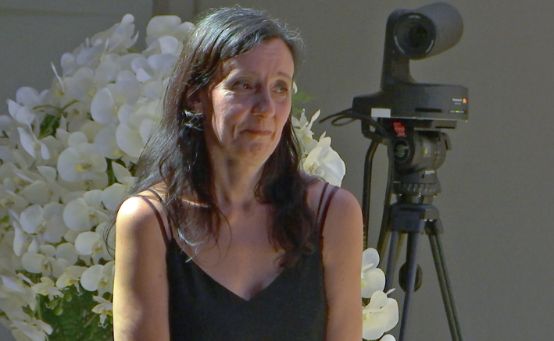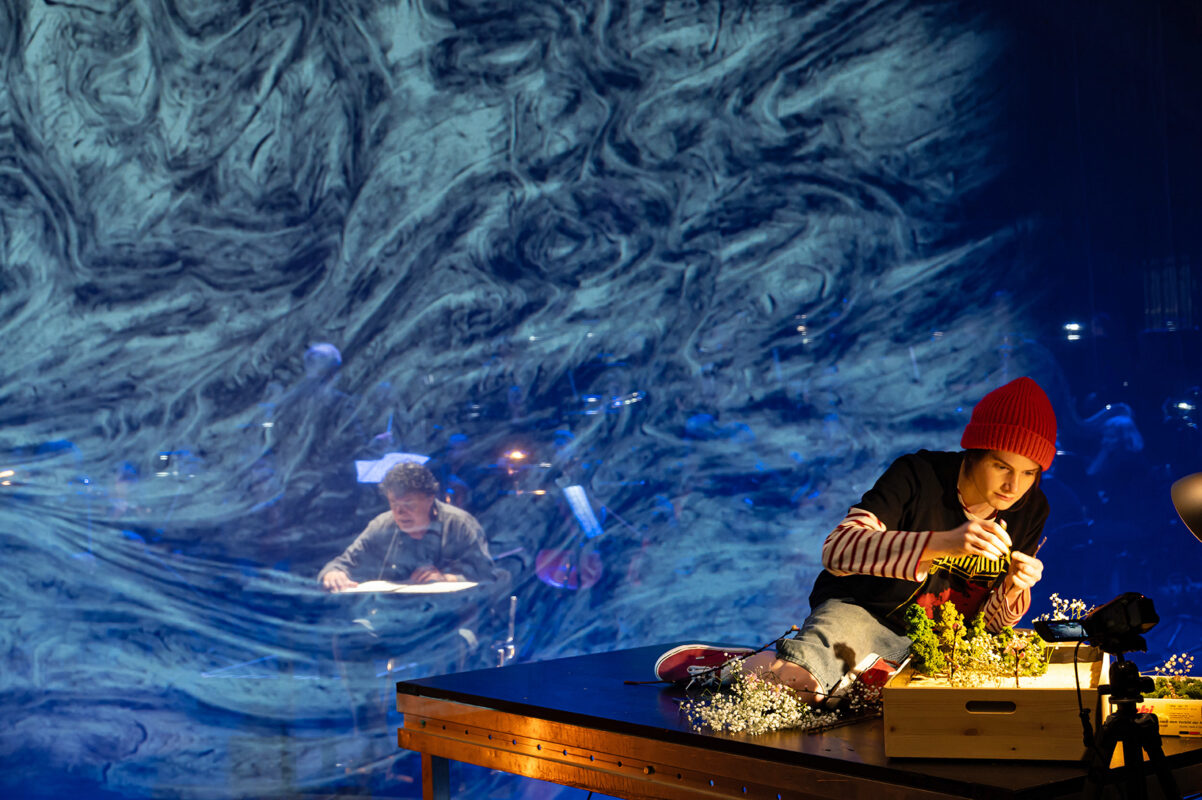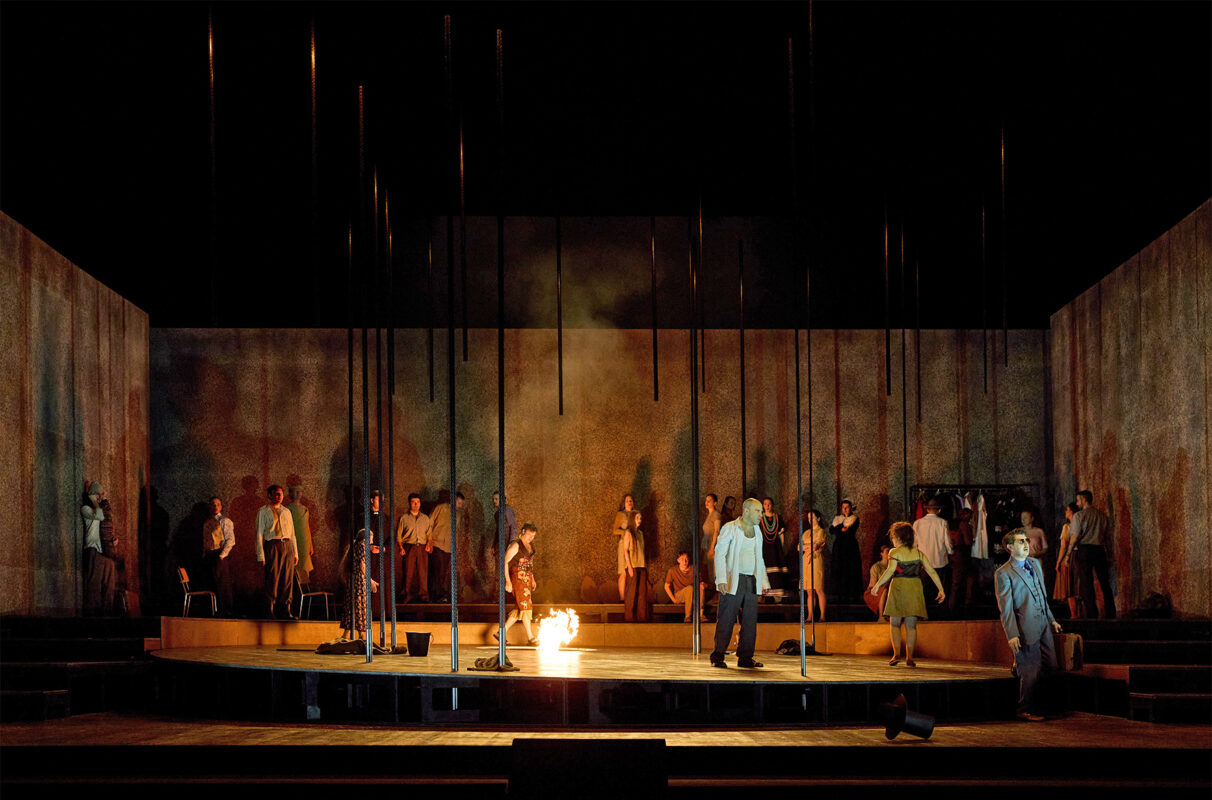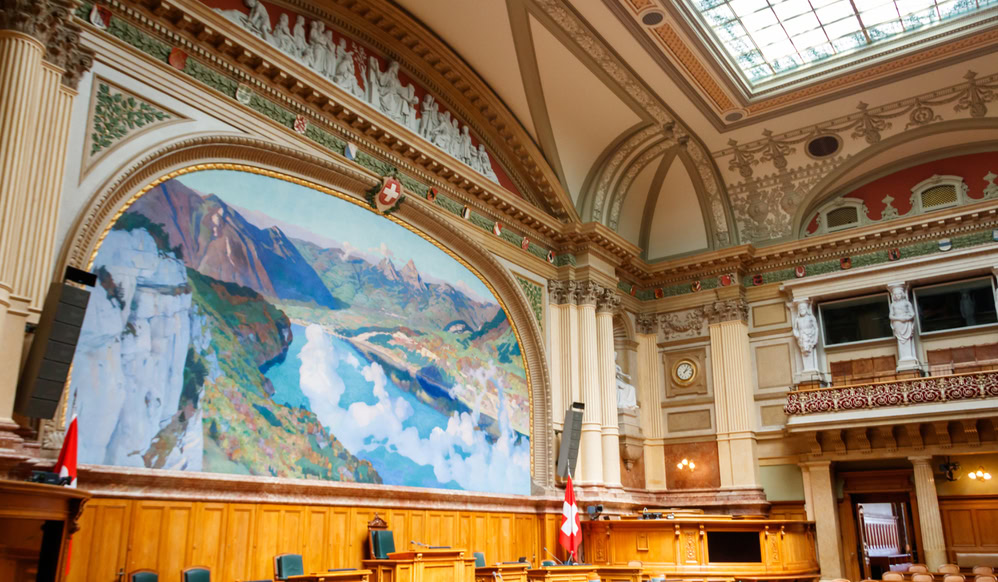The sound of images
The Musikkollegium Winterthur presented an impressive showcase of works at the Rychenberg Competition prizewinners' concert. Photo series formed the starting point for the compositions.

Gone are the days when critics could write diatribes about concerts that they hadn't even graced with their presence. Contact tracing is the magic word for putting an unloved guild in its place. So it was of no use to the reviewer that the Rychenberg Competition prizewinners' concert on September 9 was streamed live from the Stadthaus Winterthur. His lack of physical presence would have been noticeable despite his knowledge of the evening's proceedings.
Streaming was a stroke of luck, however, for the two composers Annachiara Gedda and Verena Weinmann, who had to stay away from the concert for quarantine reasons. Young composers rarely have the opportunity to put the sound combinations and dramaturgical sequences they hatch in the quiet chamber to the test of reality, especially with orchestral works. Digital technology has now allowed the two of them to at least not let the opportunity pass completely unused, even if the experience is not comparable to what you can hear in person.
Gedda and Weinmann are two of five prizewinners who were awarded prizes at the Rychenberg Competition and performed at the final concert. The international composition competition was launched in 2018 by the Musikkollegium Winterthur together with the Fotomuseum Winterthur, with the special feature that the participants had to relate their orchestral work to one of three photo series selected by the museum. An unusual task, for which 191 composers from over 30 countries have registered. In the end, 85 works were submitted by the end of March 2019, ten of which were nominated for the final concert by a jury led by President Alfred Zimmerlin. The Musikkollegium then made an effort for these ten pieces that cannot be overestimated. They were rehearsed within a very short space of time, recorded last summer under the alternating direction of Thomas Zehetmair and Pierre-Alain Monot and put online for a public vote. (They can still be heard at www.rychenbergcompetition.ch.)
Amazing public vote
The Audience Award was won by Fabian Künzli from Thurgau. His work The horizontal hourglass is a special case, as the version played at the prizewinners' concert did not correspond to the version presented online. This was accelerated by a factor of 8 while the pitches remained the same. This circumstance is somewhat thought-provoking. Because the fast-forward version, which the audience had chosen as the best contribution, seems like a caricature of music, flat and pale compared to the piece played live. It is a mystery how this experimental arrangement, which came across as cold, was able to warm up the audience. Perhaps it was the unusual concept?
The task itself also made you think. But there were no reflections on the relationship between visual and sonic art. Nor were there any digressions on the subject of "art about art". What attracted attention was simply the fact that eight of the ten nominees had chosen the same series of photographs as the subject of their creative will. Find a way or make one by Geneva-based photographer Anastasia Mityukova is inspired by the story of the North Pole explorer Robert Peary. The self-proclaimed first explorer of the North Pole faked the route and success of his journey. Based on this, Mityukova's photo series is a fictitious documentation of a polar expedition made in Switzerland. It was significant how the composers involved in the final concert explained their choice. The quintessence that emerged from all of them was that they were fascinated by the contrast between movement and statics. The majority of participants approached the task from the most general possible point of view. Movement - statics is an opposition that pervades our existence (life - death) and is inherent in all art, both as a problem and as a driving force. Accordingly, no specific point of reference was sought, but rather a series of photographs was chosen that allowed the greatest possible freedom for the artist's own composition. This is not to be criticized in principle, but it does call into question the relevance of the task.
Starting from injuries or proportions
However, in the end, the works for Mityukova's picaresque piece won the audience award and second and third place. With ICE_one_h by the Italian painter and composer Valerio Rossi, a piece of music made it to the bottom of the podium whose delicate calmness might have escaped the attention of a less attentive jury. However, Rossi's delicate, wandering and changing sounds in the orchestra seemed too spun in the context of a competition to make it to the top. In complete contrast to the reviewer's second-placed favorite. Chasing Ice by Annachiara Gedda, born in Turin in 1986, impresses with its immense colorfulness and a richness that unites strong contrasts. "New" sounds meet circus, aggression meets tenderness, mischievousness meets pathos. The fact that the broad spectrum of expression does not fall apart is thanks to the composer's sense of sound, who knows how to use the orchestra's possibilities with pinpoint accuracy.
In the end, it is significant that the first prize went to a composer who had not chosen Mityukova's pictures. Adél Koleszár's photo series Wounds of Violencein which the idyllic landscape of Mexico is contrasted with the visible scars of abuse and cartel violence, does not allow an approach in abstract categories. The images of injury and pain are captured by Buenos Aires-born Cecilia Arditto in Tissue and this is immediately translated into sound. Microtonal vibrations make it appear fragile and open the ears to the finest emotions. A communicative composition that speaks directly to the listener and deserves the highest accolade.
And finally, the jury's special prize also went to one of the two exceptions to the rule. Verena Weinmann, a young artist from Frauenfeld, devoted herself to a single picture from Koleszár's series, the Hills of Torreón. In doing so, she again showed a different approach to dealing with an image template. She transferred the proportions of the photograph onto graph paper in order to gain guidelines for the formal design. She evidently implemented this concept with appropriate artistic freedom, as her work never seemed contrived.








